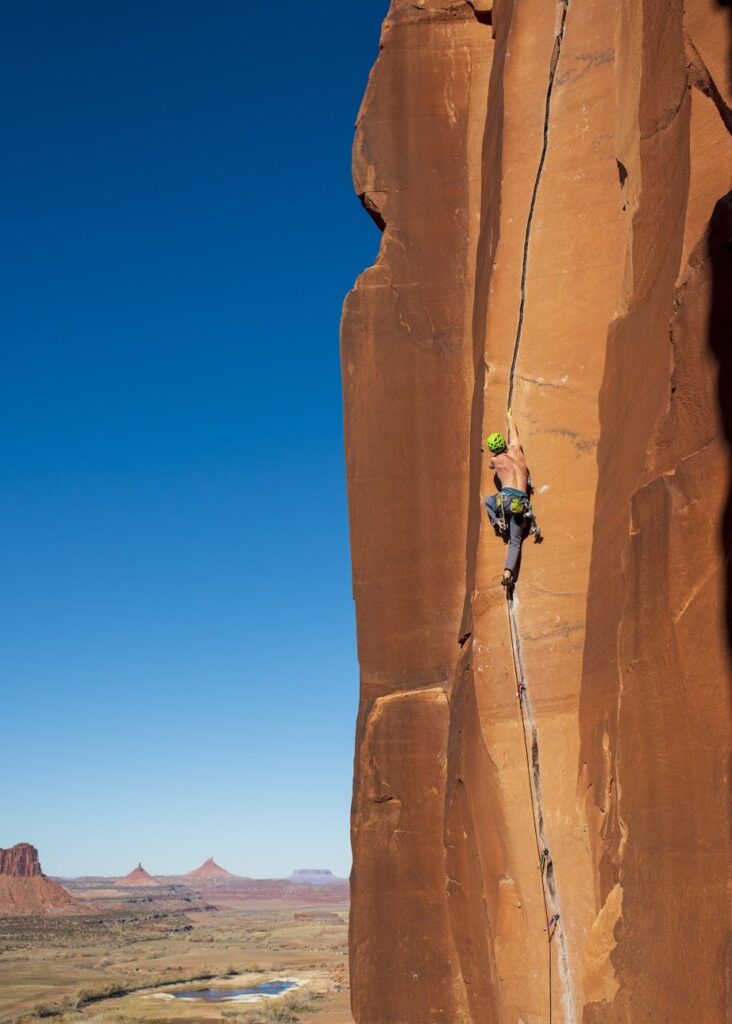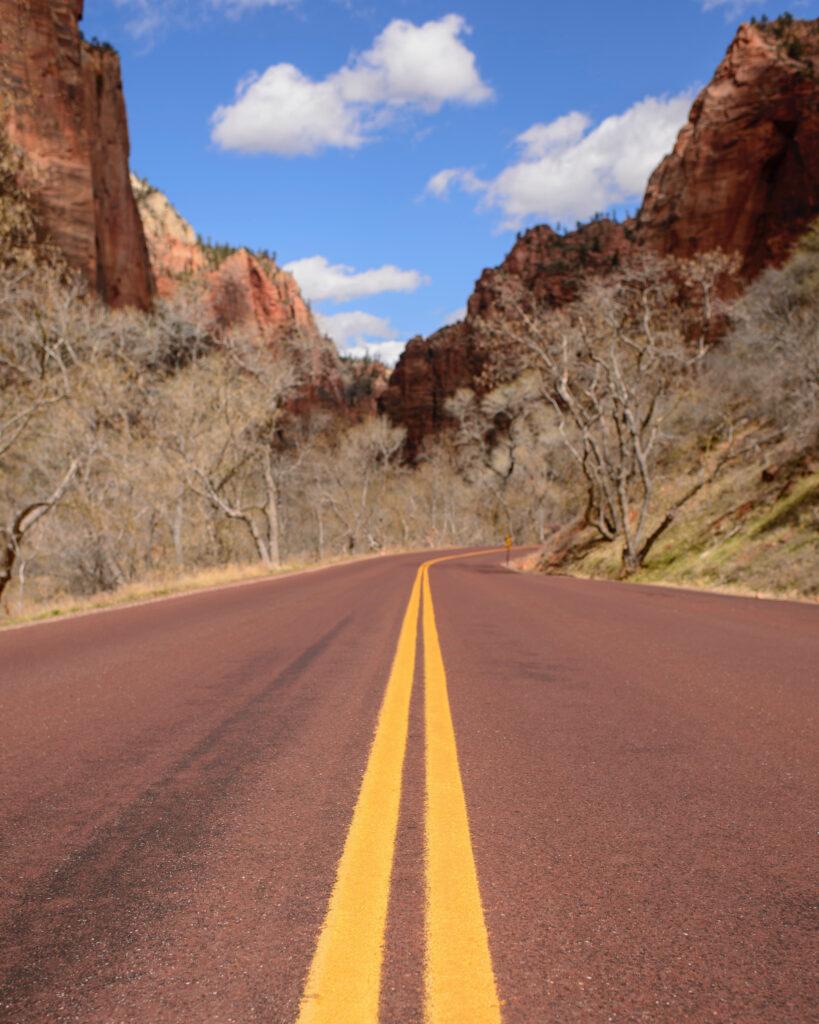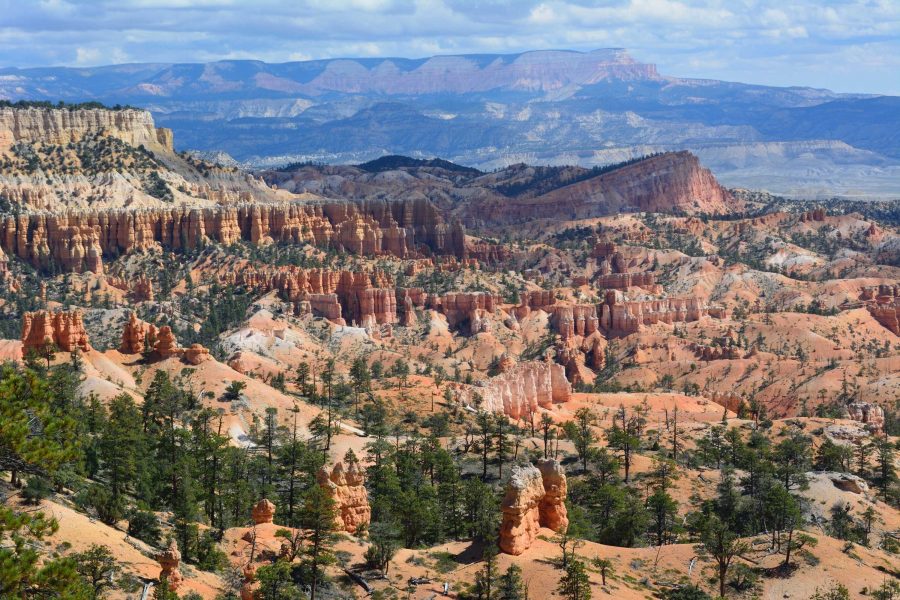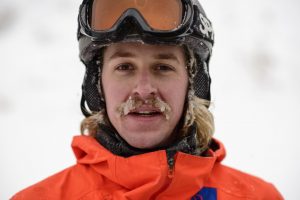There are currently 58 national parks established in our country, and Utah is the proud home to five of them. These parks are known as the “Mighty Five” and for good reason. They house some of the most beautiful and pristine landscapes in the world. Zion, Bryce Canyon, Capitol Reef, Arches, and Canyonlands are home to the diverse and iconic landscapes of the Colorado Plateau: an ancient Sahara turned to stone. Breathtaking beauty and grand displays of rocks, spires, hoodoos, pinnacles, and a plethora of other fascinating features are found throughout. Utah has the third most national parks out of any state in the U.S., second only to Alaska and California. Not only are these parks aesthetically appealing, but they are also full of rich history and intriguing stories.
Mukuntuweap
Zion was Utah’s first national park. Before it became Zion, it was known as Mukuntuweap. The name Mukuntuweap was given by John Wesley Powell, who surveyed the land in 1872. It was named after the Paiute Indian tribe who had lived in the area for centuries. The name is said to mean straight canyon, straight river, or, according to some translations, “the place where the great spirit dwells.”
Mormons started settling the Zion area during the 1850s. In 1861, settler Joseph Black rode his horse into a canyon lined with steep looming walls and was so entranced by the beauty that he rushed back to the village to tell the people of the canyon what he had discovered. The canyon then became referred to as Joseph’s Glory. The discovery inspired a group of men to venture into the canyon and settle it, raising livestock, corn, and tobacco.
Isaac Behunin was one of these settlers, he wrote that the canyon walls were “natural temples,” and it was a place where they “can worship as [they] please.” He began to call the canyon Little Zion, believing it was just as worthy of the name as Salt Lake City, which was originally called the City of Zion. Zion is another word for the kingdom of heaven in Christian beliefs. Brigham Young, the leader of the Church of Jesus Christ of Latter-Day Saints, was not pleased by the use of this name. “No, it is not Zion”, he reportedly said, “Zion is the place where the pure in heart dwell.” He refused to visit the canyon. President William Howard Taft unknowingly agreed with Young’s distaste of the name and proclaimed the area Mukuntuweap National Monument in 1909. President Woodrow Wilson then re-designated the park as Zion National Park in 1919.
After the designation, the park began to develop. Trails, roads, visitor centers, ferries, and the Zion-Mount Carmel Tunnel were constructed and began to draw people in worldwide. Each year since 1919 the number of visitors has grown exponentially. Now, Zion is the fourth most visited park in the nation. It has become a victim to its own success, however. Many believe the crowds are reaching a threshold. Campgrounds, trails, roads, and pristine landscapes are over-run and slowly deteriorating. Visitors increase while funding decreases, and the park can’t keep up. In 2017, more than 4.5 million people visited Zion. Park officials issued proposals to limit the number of visitors to the park to protect its integrity and natural resources, but nothing has been implemented yet.
Land of Legend People
Bryce Canyon National Park was the second park to be designated in Utah. The area, referred to as the Panusagunt Plateau, was originally inhabited by the Paiute Native Americans. They referred to the fantastic array of hoodoos and spires that adorn the landscape as “legend people” who had turned to stone by a mythical coyote. The Paiutes were expelled by Mormon settlers in 1875, who had come to the Paunsagunt Plateau to harvest timber. Ebenezer Bryce was one of the settlers, and the canyon behind his house became known as Bryce’s Canyon. He literally paved the way to Bryce Canyon when he built a timber road to the rim. Bryce was most famous for saying that Bryce Canyon was a “helluva place to lose a cow!”
After the year 1900, visitors began to come to the canyon to see the incredible rock formations and vibrant colors. By the 1920s efforts were being made to set aside the area as a national park. In 1923, the area was designated as a national monument then became a national park five years later in 1928. The Civilian Conservation Corps constructed an 18-mile scenic rim road through the park for visitors to drive on. Another iconic visiting point in the park is the western-themed Ruby’s Inn, which was the original tourist rest-spot, constructed and run by Ruby Syrett in 1916. Bryce Canyon National Park now attracts around 2.6 million visitors annually and is known for housing the largest collection of hoodoos in the world.
Waterpocket Fold
Capitol Reef National Park is perhaps the least known of the five parks of Utah. The tremendous 100-mile long reef of uplifted rock was created 65 million years ago during the same continental collision that formed the Rocky Mountains. This formation is known as the Waterpocket Fold. Its sandstone towers and white rock domes reminded the early settlers of the U.S. Capitol’s dome, seeding the name Capitol Reef.
The park was originally inhabited by Fremont Native American Indians long before the introduction of settlers. They farmed corn and squash and made granaries to store their foods in the high rock walls. Around the year 1250, the Fremont people disappeared from the area and left behind rock art and artifacts. Paiute Indians moved into the reef around 1600 and lived there for a few hundred years.
Mormon settlers saw the area as a beautiful and bountiful place to grow orchards, so they settled the area in the 1880s. The town was originally called Fruita because of its fruit production. A local man named Ephraim Portman Pectol and his brother-in-law, Joseph S. Hickman decided to organize the Wayne Wonderland Club. The organization brought publicity and protection to the Capitol Reef area. They lobbied for what they referred to as “Wayne Wonderland” to be dedicated as Utah’s first state park. The locals were urgently looking for government recognition over the area so that they could reap the economic benefits while placing protection on the land. The government officials saw the land for its extraction and natural resource possibilities and were reluctant to grant protection. The town locals even threw a park-opening party before the area was ever legally designated. Less than a week after this celebration Hickman drowned in Fish Lake, and the push for the State Park title lost its momentum. Pectol became the new leader of the Wayne Wonderland Club and in 1937, after years of political lobbying, the area was designated a national monument. Following this, years of intense political debate and pushback led to its designation as a National Park in 1971.
The roads going into Wayne County, where the park is located, were rough and nearly un-navigable, especially in the winter. The entire area of Boulder, Utah and the surrounding terrain was the last place in the continental United States to receive mail by mule because of its inconvenient access. In the late 1930s to early 1940s the Civilian Conservation Corps, created by President Franklin Roosevelt, worked vigilantly on creating infrastructure in the Capitol Reef area. They successfully constructed a year-round road leading into Boulder so there would be access to the remote town. Today, the park sees close to 800,000 visitors from all over the world.
Moab and More
Arches National Park sits outside of the town of Moab and is famously known for its sandstone arches. More specifically, Delicate Arch which stands at 60 feet in height. It has become a symbol for Utah. Around 300 million years ago an inland sea covered the area, which refilled and evaporated a total of 29 times. This left behind thousand-foot thick salt deposits which were later covered by thick stone layers. The less-dense salt has been forcing its way through the stone for millennia and creating the incredible arches, domes, spires, and valleys you see today. Arches was declared a national monument in 1929, and by 1971, it became a national park. Ancient Native American Fremont people lived on the land but disappeared from the area around the same time they left Capitol Reef. In 1775, the first Spanish missionaries visited the land, and its astounding beauty began to gain traction. In the 1880s, ranchers and farmers settled permanently in the area. Arches is home to more than 2,000 natural arches, more than anywhere else in the country. It sees over 1.5 million visitors each year and the numbers continue to soar.
Canyonlands National Park is situated at the confluence of the Colorado and Green Rivers. Former Secretary of the Interior and naturalist Stewart Udall was invested in preserving the area’s beauty. In 1961, Udall announced that two areas were being considered for another national park in Utah: Rainbow Bridge National Monument and the area where the Green meets the Colorado River.
Over 30 people toured the land with Udall to determine if it was worthy of a national park. Frank Masland, a chair member on the National Parks Advisory Board, reportedly wrote that he does not “believe there was a person on the trip who was not impressed by the grandeur of the country, by its loneliness, its beauty and its form… With complete unanimity all agreed that as a national park it would rank second to none.”
After the tour, Udall declared the canyon country as Utah’s new national park. The declaration was met with opposition from many. Mainly because it would restrict resource extraction and economic growth seeing as the area is rich in mineral resources. In September of 1964, President Lyndon B. Johnson established the area as a national park. In 1971, the park was expanded from 257,640 acres to 337,598 acres, which included the addition of the Horseshoe Canyon Annex. Many people lobbied for the park to be expanded further but no legislation for this ever gained traction. For now, the park receives around 800,000 visitors per year and is known, not only for its beauty but also, for being the setting of the story of Aron Ralston. The popular movie, 127 Hours, depicts how, in 2003, Aron traveled into Canyonlands National Park, got stuck in a canyon slot near the Maze district and had to cut off his own arm to get free.
It’s easy to visit these parks and get swept away by the multicolored sandstone buttes, cliffs, slickrock, and vistas. It’s important to appreciate the history of the parks and pay homage to the people that pioneered the rough landscapes and lobbied for their protection so that we might enjoy them today. As more visitors come to Utah each year, it’s crucial that we remain focused on the land and its integrity in order to prevent its demise. National parks are delicate and extraordinary places that, if treated correctly, allow us to escape into the world’s most immaculate landscapes.



